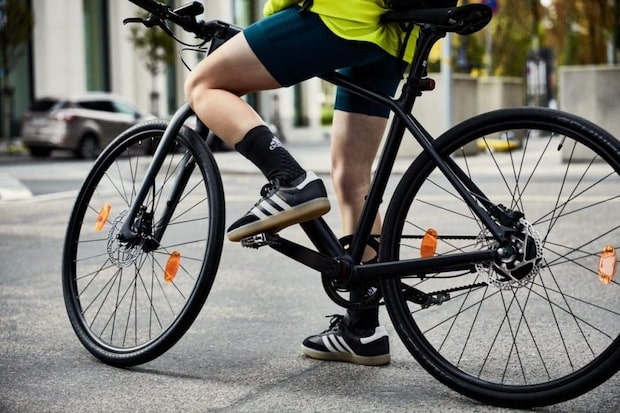College students commonly use cycling as a means to commute to college or navigate around on their campuses. Biking is a good way for them to stay in shape while saving money. Despite these benefits, students often make similar mistakes when riding, causing accidents, damage to their bikes, or inefficient cycling. In this essay, I will examine some of the most common errors made by college students when it comes to cycling and how to avoid them. For those looking to balance academic life and sports, Ukwritings – a website for essay writing, can provide invaluable support. Ukwritings helps students manage their coursework effectively, giving them more time to engage in physical activities like cycling.
1. Ignoring Basic Bike Maintenance
Most of the students do not take care of their bikes, which is why they did not work properly. Here is advice, fix up your cycles to avoid any problem if there is any issue.
Common maintenance mistakes include:
- Not lubricating the chain
- Failing to check tire pressure
- Ignoring squeaky brakes
- Forgetting to tighten loose bolts
- Not cleaning the bike regularly
To sidestep these situations, schedule a reminder to check your bike every week or so. Get a tune-up or learn the basics of simple maintenance. Look for a local community bike shop, if you don’t know how already.
2. Riding Without Proper Safety Gear
Cycling safety should be one’s priority in considering environmental issues for students. Most students do not care that wearing helmets and riding bicycles with low intensity light is common.
For instance, the 20-year-old sophomore Sarah said she thought a helmet was unnecessary at least for short spin-arounds on campus. Until the day she hit a pothole and fell, suffering a concussion. She reports, however, that from that point on she never rode without being helmeted.
Make sure to wear a helmet that fits perfectly; ride with front and rear lights at night; and, if you like, wear bright or reflective clothing to make yourself more visible.
3. Ignoring Traffic Rules
They should obey traffic rules and ride like all cars. Many students go through the red lights, riding against traffic or moving in between cars.Such behaviours are not only forbidden but also more dangerous.
Where pedestrians walk, watch for traffic and make sure the coast is clear before you enter. Get familiar with local bicycle laws: ride with the flow of traffic, yield to the right, and use hand signals when turning or slowing down.
4. Choosing the Wrong Bike Size
Riding a bicycle of improper fit can cause great discomfort, inefficiency and injuries.
Here is an illustration for how incorrect bike size affect the ride :
| Aspect | Right Size | Wrong Size |
| Comfort | Comfortable for long rides | Leads to back, neck, or knee pain |
| Efficiency | Allows for optimal power transfer | Wastes energy, slower speeds |
| Control | Better handling and stability | Reduced control, higher crash risk |
| Posture | Promotes good riding posture | Can cause poor posture, leading to injuries |
Finally, pull into a bike shop and get an expert fitting: someone who can order a frame for you and make sure the seat and handlebar heights are properly adjusted to your riding needs.
5. Not Planning Routes in Advance
Many students start without knowing the best route, then get lost, ride on dangerous roads or end up late for a class.
Plan your routes in advance, using cycling-specific maps or apps that highlight bike lanes, quiet streets, and paths, and aim to avoid high-traffic roads where possible. Familiarise yourself with bike routes on campus and around town. For additional academic support while you focus on cycling and other activities, consider using the UK best essay writing service. They offer professional assistance with essays and assignments, helping you manage your academic workload efficiently.
6. Inadequate Bike Security
On college campuses bike theft is a common issue: lots of students are using a simple lock to secure their bikes. Other times, they are even not locking their bikes properly.
Practical example:
John had chained his bike with a thin cable lock by the library and returned after a two-hour study session to find that his bike had been stolen. Had he chained his bike with a reliable U-lock to the bike rack, locking the frame and wheel, then his bike might still have been there.
Buy a good quality U-lock or chain lock. Always lock your bike both by the frame and at least one wheel to a good quality bike rack. Use two locks in high-theft areas if you can.
7. Overloading the Bike
Most young college students are too impatient for machines and carry too heavy a parcel, which doesn’t help them to keep balance on the bikes.
How to Carry Things Safely:
- Use a sturdy rear rack with panniers for heavy loads
- Invest in a good-quality backpack for lighter items
- Avoid hanging bags from handlebars, which can interfere with steering
- Distribute weight evenly on both sides of the bike
- Don’t exceed your bike’s weight limit
These tips will help you to avoid ruining your ride by carrying your books, groceries and other items.
Conclusion
Cycling is an amazing, healthy and environmentally friendly way of getting around from your campus. Avoiding these mistakes mentioned will make your ride safer, more enjoyable and easier. Try concentrating on just one or two areas where you could improve your cycling. Before you know it, you’ll be more confident and capable of biking – and really taking advantage of bikes as transportation on campus.








